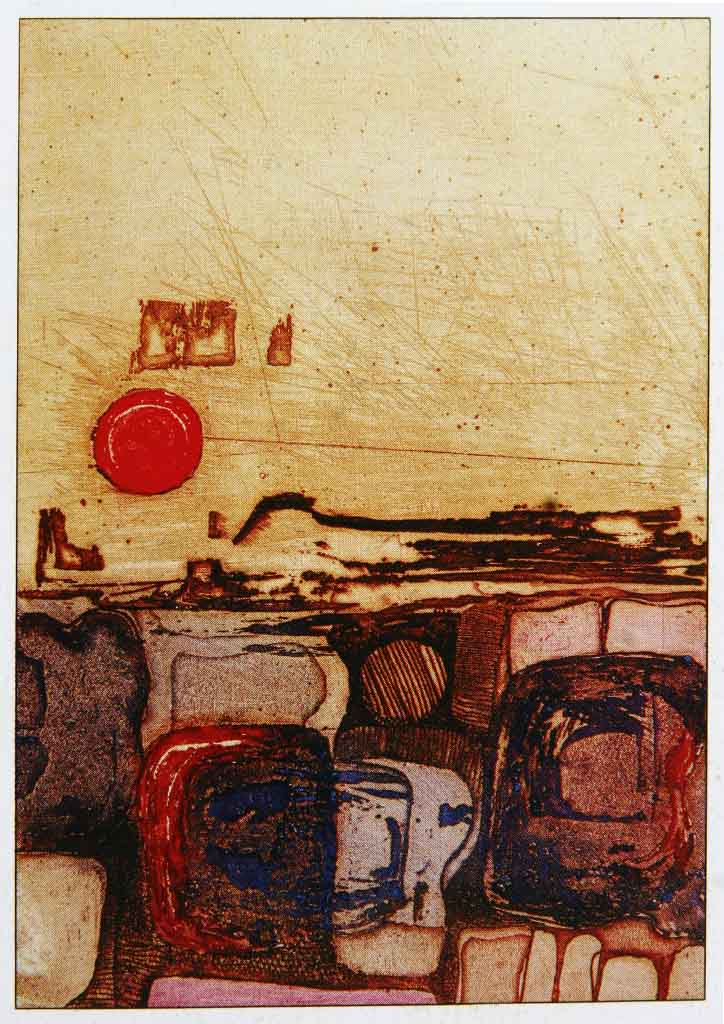
Abstracting Nature: Jose Joya and His Abstract Expressionism
“Whether portraying objective reality or subjective inspiration, drawing remained important to me. The medium was immaterial. I used ink, washes, even color, provided the graphic characters that took shape on paper were directed by my intuition and imagination.” – Jose Joya, 1976
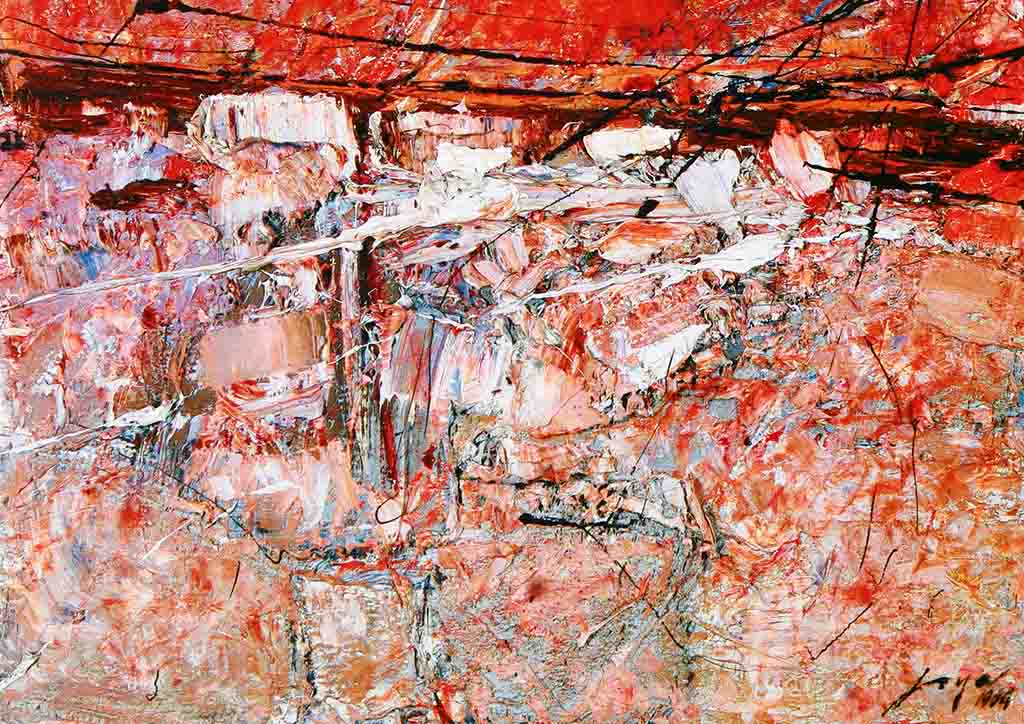
Joya’s Contemporaries
He was one of few Filipino artists who combined a keen intelligence, love of country, and a modern sensuality of form that is uniquely ours. Jose Tanig Joya (1931-1995) was declared National Artist in 2003. He came from a singularly gifted generation of artists who were part of the prolific University of the Philippines School of Fine Arts, Batch 1953.
His classmates included Napoleon Abueva, Pitoy Moreno, and Federico Aguilar Alcuaz (all National Artists). He also counted Rodolfo Ragodon, Juvenal Sanso, Araceli Limcaco-Dans and Angel Cacnio among his peers. He was also undoubtedly the smartest of the group, having graduated with perhaps the first summa cum laude in UP Fine Arts history.
YOU MIGHT LIKE: Napoleon Abueva’s Gothic “chapel” workshop
Trained by conservatives like Guillermo Tolentino, Fernando Amorsolo, Dominador Castañeda, and Toribio Herrera, Jose T. Joya nonetheless became immortalized for his tireless championing of Philippine Abstraction. And yet, as he revealed in his published memoirs, he approached the academic tedium with vigor and excitement. “As a conscientious student, I faithfully followed their lead while proceeding, on the side, to experiment to satisfy my own investigative inquiry into the creative impulse.”

From Classicism to Abstraction
Though he would never forget the lessons pounded into his head by these rigid classicists, Joya would relish the freedom and forward-looking atmosphere that he experienced at the Philippine Art Gallery (PAG) run by Lyd Arguilla in the early Fifties in Mabini. Here, he would meet and talk to such modernist heavyweights as National Artists Hernando R. Ocampo and Vicente Manansala, Anita Magsaysay-Ho, Fernando Zobel, and Arguilla herself. It was the cerebral intellectualism of the Moderns that attracted Joya to their cause.
READ MORE: The prolific life and house-studio of Abdulmari Imao
He participated in the pivotal Exhibition of Non-Objective Art in Tagala at the PAG in 1953, and held his first solo exhibition there in 1954. Jose T. Joya recieved his first art grant abroad to study at Madrid’s Instituto Cultura Hispanica from 1954-55. It was also the first time that he saw Abstract Expressionist works such as Jackson Pollock; and European Modernists like Graham Sutherland, Lucio Fontana, Francis Bacon, and Henry Moore, which he saw in museums in London, Paris, and Rome.
Subsequently, in his postgraduate training at the Cranbrook Academy of Art in Michigan from 1956-57, he would learn how to compose in abstraction from mentors like Zoltan Zepeshy, Carl Mills, Lazlo Moholy-Nagy, and Eero Saarinen, and seal this romance with the abstract as a lifelong commitment in his own work.
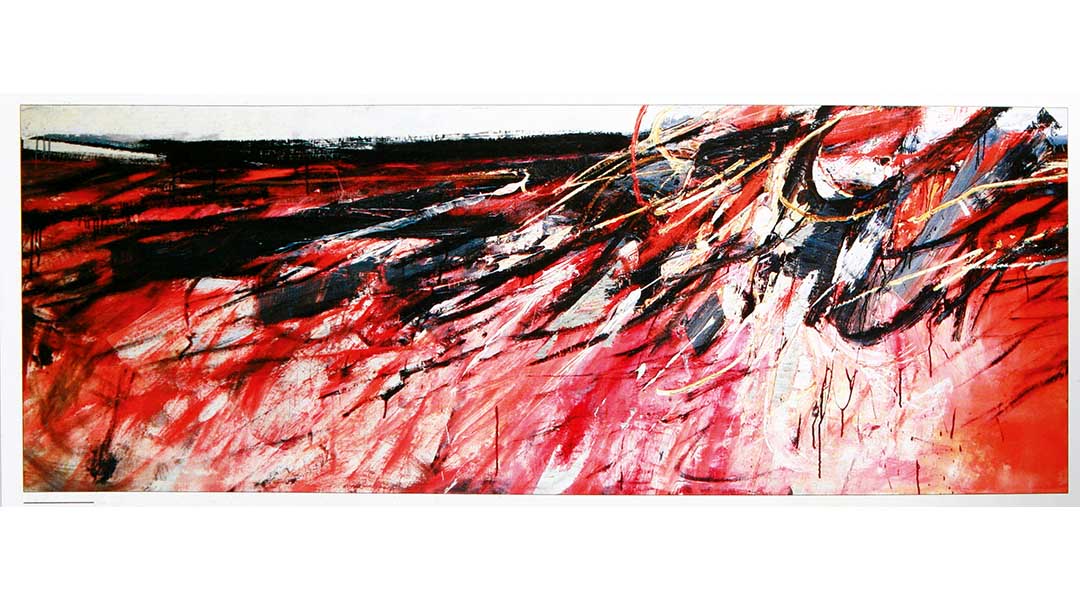
Embracing Modernism: Joya’s Artistic Evolution
Jose T. Joya’s early work from 1949 to 1953 was highly figurative and conventionally representational, in line with the expectations of his Conservative mentors at UP. When he returned from Michigan in 1957, his work displayed a raw power and energy that fed off from his mentored experience with Abstract Expressionism, which was then at the height of its popularity in the US. His works from the late Fifties to the late Sixties, using a cheaper oil paint substitute called Hubock White, combined a highly kinetic application of paint on canvas, slashed on with great energy from a palette knife to form strong diagonals and rich contrasts between lines and planes.
Alternatively, Joya would also use a more melodic application of thick areas of flat color, laid in with blocks resembling boulders or masonry. Often of a large or dramatic scale, Joya’s abstracts followed a process of visual and formal reduction based on an observation of nature. Landscapes, trees, rivers, rocky peaks and cities were the sources of his vision, rearranged and simplified into lines, planes, colors, and “visual sensations.”
YOU MIGHT LIKE: The Enlightened Maestro: Martino Abellana, the Amorsolo of the South
Dynamic Abstraction: Joya’s Creative Explosion
Typical of these works is Hills of Nikko (1961), which is Joya’s interpretation of the landscape around the famous mountain lake resort north of Tokyo. Dominated by a right-leaning series of black diagonals, interspersed with smaller planes of red, blue and ground over a white triangular base, the painting summarized for Joya both passionate emotions and the pictorial clarity of a sublime vision.
In his 1964 solo exhibition where he donated this painting—also displayed at the Venice Biennale of that year—to the National Museum, he said: “What incredible joy enamours me upon realizing the imagery I wanted to convey—the graphic concoction taking the shapes of joy, violence, turbulence, aspirations, and poetic ideas running in my mind. I squeeze my paint tubes directly, throw my paints in calculated gestures with spatulas and practically hurl my canvas in a wild attempt to depict the onrushing tempo of the present jet-age modernity.”
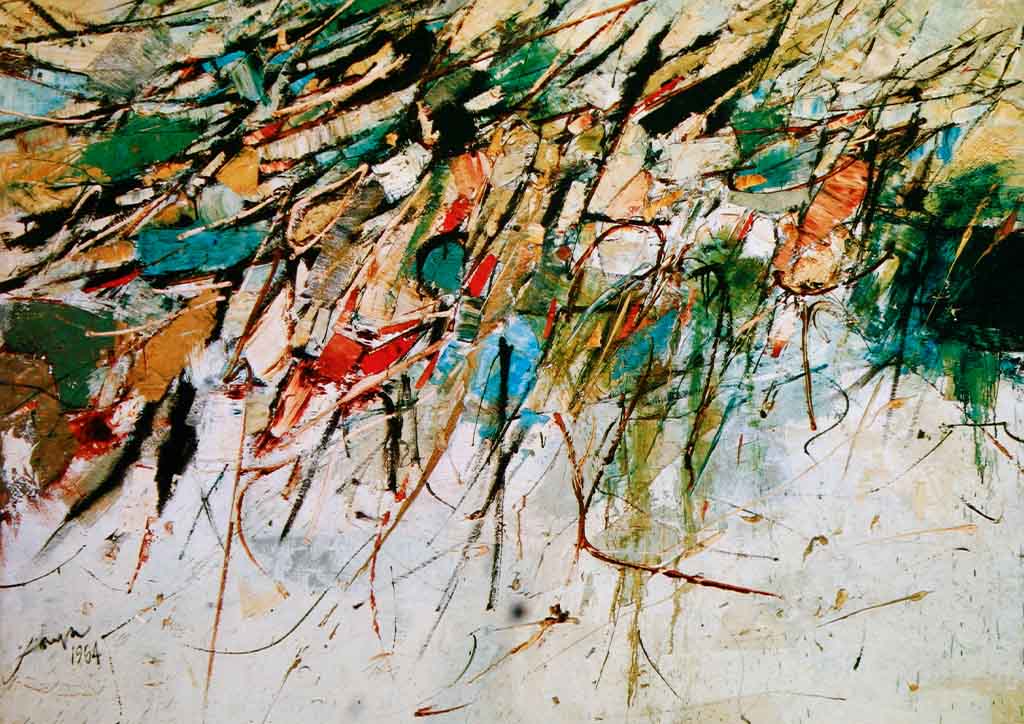
In the Seventies, Joya discovered the advantages of acrylic paint, with its bright chromas, short drying time, and non-toxic effect on his sensitive constitution. Continuing to paint in huge canvases like Binhi (1971), the PICC mural or Sangley Point-Dacion En Pago (1977), and Barter in Panay (1978), Joya would also expand to undertaking mixed media sculpture-painting using ceramic plates from the Seventies to mid-Eighties.
Mentoring the Next Generation
As Dean of the UP College of Fine Arts from 1970 to 1978, he would be a shining example as mentor to artists like Nestor Vinluan, Alfredo Liongoren, Lito Carating, Roy Veneracion, Rock Drilon, Benjie Cabangis and Eghai Roxas.
READ MORE: Fusing Old and New: National Artist Benedicto “BenCab” Cabrera
He reinvigorated the nude sketching classes by opening it to all student levels; and by varying the mix of models to include couple pairing. Never failing to impart to his students the need to learn firsthand about the experience of the human figure as an endlessly fascinating combination of forms and gestures, Joya joined them in the discipline of nude sketching.
It was a habit that he also propagated in his frequent tours around the countryside despite the travel ban under Martial Law from 1972 to 1976. In these sketching tours, he would meet and start organizing local artists from places as disparate as Malolos, Bulacan; Bacolod City; and Cebu City to undertake their own efforts in putting together a viable artist’s forum for mutual self-development and artistic excellence.
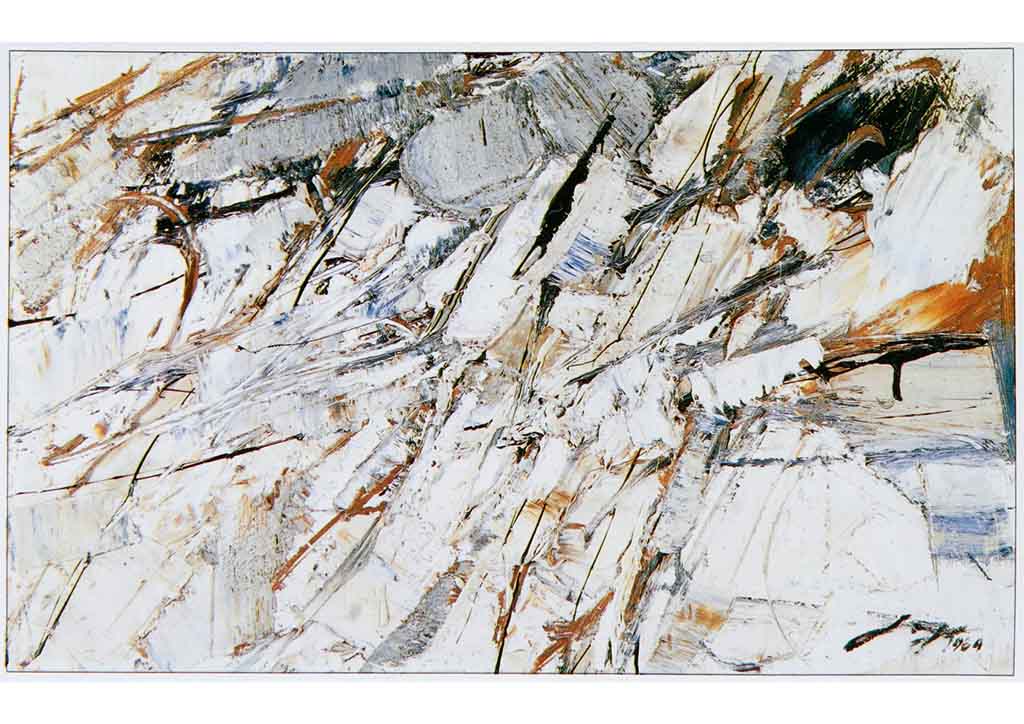
He would initiate the Jose T. Joya Awards for the Fine Arts students at UP Cebu College in 1977, which is still being held annually. From the mid-Seventies until the Nineties, Joya would also be famed for his exquisite pencil drawings of mother and child, and in particular, nudes. His affinity for the male nude, drawn from professional models, bodybuilders, and farmers and fishermen whom he discovered in his travels, is notable for its grace, as well as its underlying homoerotic appeal.

A Legacy of Brilliance: Jose Joya’s Contributions to Modern Filipino Art
From the late-Seventies to the mid-Nineties, Joya would also be immortalized for his last series of mixed media works utilizing handmade paper, acrylic paint, and glue. He pasted up compositions that were subtly evocative of nighttime landscape scenes, with a pale red sun or white moon hovering in the “horizon” formed by overlapping, gauzy pieces of paper and painted shapes.
This last series also confirms the ageless renewal in Joya’s Abstraction 58. A Filipino and Asian Modern sensibility that does not try to destroy or control nature (as Westerners often do in art), it enhances and celebrates it as part of the total human experience. As his posthumous National Artist citation puts it: “Jose Tanig Joya distinguished himself by creating an authentic Filipino abstract idiom that transcended foreign influences….and constitutes an important landmark in the development of Philippine modern art to which he infused new energies, concepts and values in line with the theme of nationhood.”

